10 Best Easy Deep Hip Opening Yoga Poses for Flexibility
The potential of hip openers and hip-opening yoga practices is a transformative journey for both body and mind. In Yoga, hip-opening poses offer a gateway to release tension, enhance flexibility, and cultivate a deeper connection with one’s core. Often regarded as the emotional storage centre, the hips carry physical and emotional stress.
We all have sedentary lifestyles and your hip muscles can be not that opened ( tight hip flexors or psoas muscle ) . So having a good yoga practice and a great great stretch on a daily basis can definitively help !
Hip opening yoga sequences, encompassing poses like Pigeon, Butterfly, and Warrior II, provide an opportunity to unravel these layers. As we delve into hip-opening practices, we invite a sense of vulnerability and openness, allowing stagnant energy to flow freely.
Want to try Pilates and don’t know the difference ? find our full guide about Yoga and pilates HERE
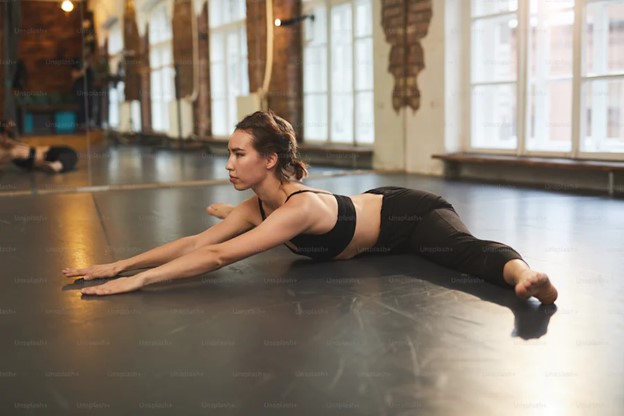
The benefits extend beyond the mat, offering relief from lower back pain, improving Posture, and fostering emotional release. Embrace the journey into hip-opening Yoga – a pathway to physical liberation and emotional well-being.
You will find below the best yoga poses and hip-opening stretches for a greater range of motion and if you have a lot of tension in that part of your body
PLAN OF THE ARTICLE :
– Benefits of Hip opening yoga
– Precautions to take while doing Hip opening Yoga
– Which muscles to work on if you want to have a better hips flexibility ?
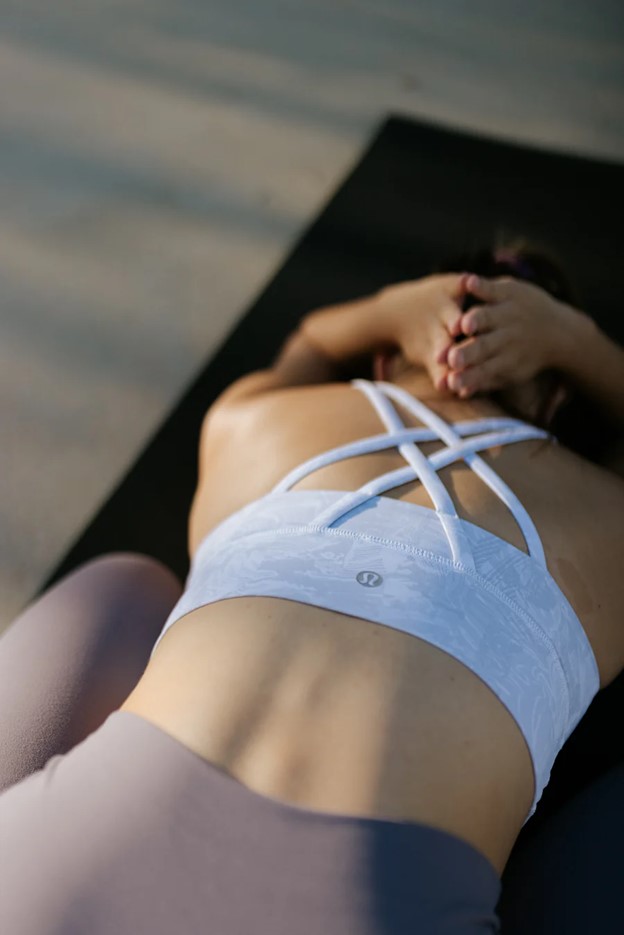
Best hip opening Yoga poses
1. Pigeon Pose (Eka Pada Rajakapotasana):
– Begin in a tabletop position, bringing one knee toward the wrist and extending the other leg behind.
– Square the hips and gradually lower the torso to feel a deep stretch in the hip flexors and glutes.
– Experiment with variations, such as sleeping pigeons or using props to support the pose.
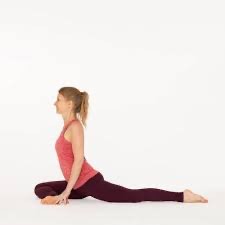
2. Butterfly Pose (Baddha Konasana):
– Sit with your spine straight, bringing the soles of your feet together, allowing your knees to drop to the sides.
– Hold your feet and gently flap your knees, resembling butterfly wings, to open up the hips.
– Gradually lean forward, maintaining a straight back, to deepen the stretch in the inner thighs and groins.
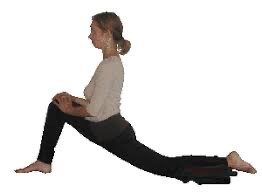
3. Lizard Pose (Utthan Pristhasana):
– From a high plank position, step one foot to the outside of the hand, lowering the hips toward the floor.
– Keep the back leg extended and sink into the hips, feeling a stretch along the inner thigh and hip flexor.
– Experiment with different arm variations, such as bringing the forearms to the mat or extending one arm toward the sky.

4. Cow Face Pose (Gomukhasana):
– Sit with your legs extended in front of you, then stack one knee over the other, aligning them as best as possible.
– Bring one arm overhead, bending the elbow and reaching the hand down the back, while the other arm reaches up and behind, attempting to clasp fingers.
– This pose opens the hips, shoulders, and chest simultaneously.

5. Happy Baby Pose (Ananda Balasana):
– Lie on your back and bring your knees toward your chest.
– Grab the outer edges of your feet with your hands, keeping your knees bent, and open your knees wider than your torso.
– Gently rock from the side to massage the spine and open the hips.
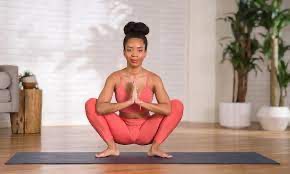
6. Garland Pose (Malasana):
– Start standing, then lower into a squat with your feet wider than hip-distance apart.
– Bring your palms together in front of your chest, using your elbows to press your knees outward.
– This deep squat opens the hips, stretches the groin, and engages the thighs.
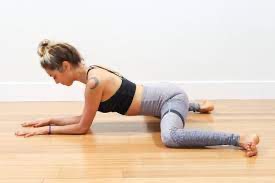
7. Frog Pose (Mandukasana):
– Begin on hands and knees, then slowly widen your knees as far as comfortable.
– Lower your hips toward the ground, keeping your ankles in line with your knees, and feel the stretch in the inner thighs.
– Maintain awareness of your alignment to prevent unnecessary strain on the knees.
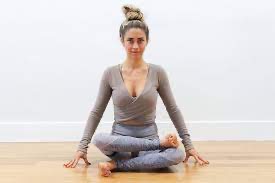
8. Fire Log Pose (Agnistambhasana):
– Sit with your legs extended, then stack one shinbone on the other, creating a 90-degree angle with your legs.
– Flex both feet and, if comfortable, hinge at the hips to fold forward, deepening the stretch in the outer hips and thighs.
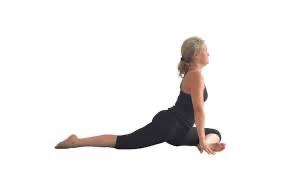
9. Half Pigeon Pose (Ardha Kapotasana):
– From a downward-facing dog, bring one knee toward the same-side wrist, extending the opposite leg back.
– Square the hips and lower the torso, feeling a stretch in the outer Hip and glute of the bent leg.
– Experiment with variations like using props or incorporating a forward fold.
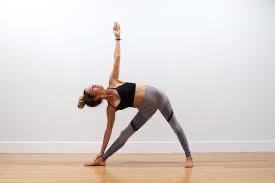
10. Extended Triangle Pose (Utthita Trikonasana):
– Start in a wide-legged stance, turn one foot outward, and extend the torso over the bent leg.
– Reach the hand down to the shin, a block, or the floor, and extend the opposite arm toward the sky.
– This pose stretches the hips, hamstrings, and groins, providing a comprehensive opening for the lower body.
Incorporating these hip-opening Yoga poses into your practice can alleviate tension, enhance flexibility, and cultivate a greater sense of balance and well-being in both body and mind. Explore these poses mindfully, respecting your body’s limits, and enjoy their liberating benefits to your yoga journey.
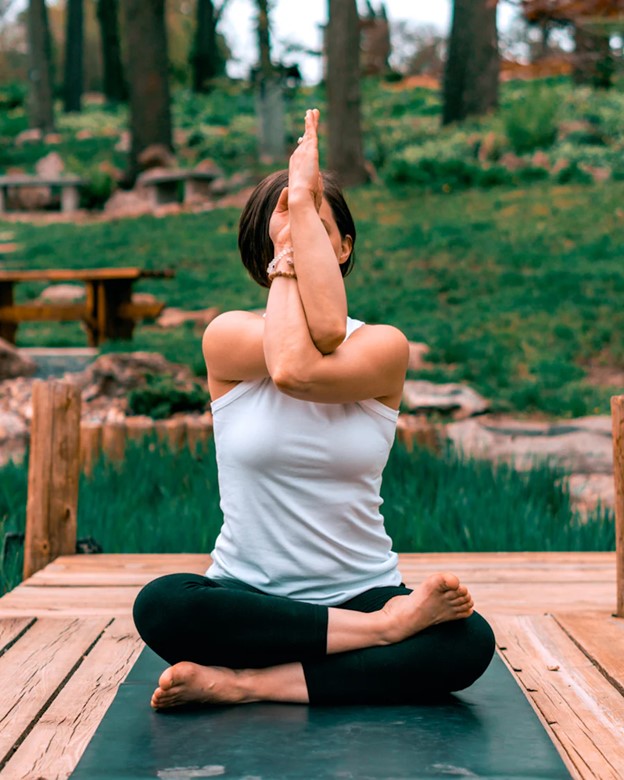
Benefits of Hip opening yoga
1. Alleviates Lower Back Pain:
Hip-opening yoga poses, such as Pigeon Pose and Lizard Pose, target the hip flexors and muscles around the lower back. Regular practice can alleviate tension in the lower back, reducing discomfort and promoting spinal health.
2. Improves Hip Flexibility:
Engaging in hip-opening poses enhances the flexibility of the hip joints. This increased range of motion improves overall mobility, making daily activities more fluid and comfortable.
3. Enhances Posture:
Hip-opening Yoga encourages awareness of pelvic alignment and helps release tight hips (24.6) tightness in the pelvic region. Improved Posture is a natural outcome, leading to a more upright and aligned stance.
4. Reduces Stress and Anxiety:
The hips are often considered emotional storage centres. Opening and releasing tension in this area through Yoga can calm the nervous system, helping to reduce stress and alleviate anxiety.
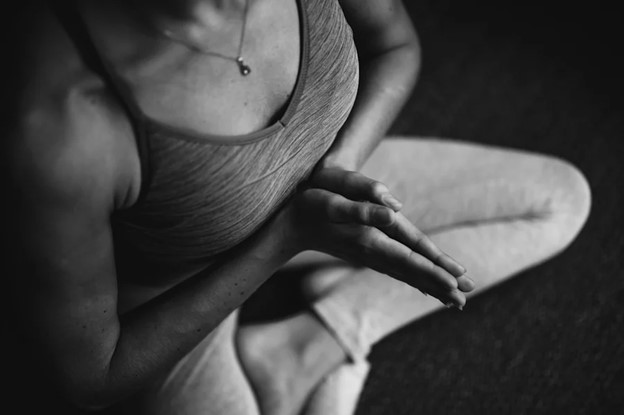
5. Relieves Sciatic Discomfort:
Sciatic nerve pain, often caused by compression or irritation, can be eased by incorporating hip-opening poses into a yoga routine. Poses like Pigeon and Cow Face Pose specifically target the muscles surrounding the sciatic nerve, providing relief.
6. Balances Emotional Well-Being:
According to yogic philosophy, hips store emotions and experiences. Hip-opening poses facilitate the release of emotional tension, leading to a sense of emotional balance and well-being.
7. Strengthens and Tones Muscles:
Hip-opening Yoga engages various muscle groups, including the glutes, hamstrings, and inner thighs (18.33) . This improves muscle tone and contributes to overall strength in the lower body.
8. Aids Digestive Health:
Certain hip joint (17.66) opening poses, like Malasana (Garland Pose), can stimulate the abdominal organs, promoting digestion and relieving discomfort associated with digestive issues.
9. Enhances Circulation:
Hip opening poses increase blood flow to the pelvic region, nourishing the muscles and improving Circulation. Enhanced blood circulation supports healthier tissues and contributes to better overall cardiovascular health.
10. Prepares the Body for Childbirth:
For expectant mothers, hip-opening poses can be beneficial in preparing the body for childbirth. These poses help to open Elvis and increase the hips, providing comfort during pregnancy and labour.
11. Eases Menstrual Discomfort:
Women may find relief from menstrual discomfort by practising hip-opening poses. These poses alleviate tension in the pelvic region, potentially reducing cramps and pain associated with menstruation.
12. Enhances Sexual Health:
The hips play a significant role in sexual health and vitality. Hip-opening Yoga can improve flexibility and Circulation in the pelvic area, contributing to a healthier and more vibrant sexual life.
13. Encourages Mind-Body Connection:
Hip-opening Yoga invites practitioners to connect with emotions stored in the hips, fostering a deeper mind-body connection. This awareness can lead to a greater understanding of oneself and emotional well-being.
14. Boosts Energy Flow:
Energy flow throughout the body is improved by releasing tension and stagnation in the hip area. This enhanced energy circulation can increase vitality and a sense of overall well-being.
15. Promotes Better Sleep:
Regular hip opening poses can relax the nervous system and reduce tension, potentially improving sleep quality. Incorporating these poses into a bedtime routine may contribute to a more restful night’s sleep.
Integrating hip-opening Yoga into your regular practice offers many physical, emotional, and mental benefits. Whether seeking relief from physical discomfort or enhancing your overall well-being, these poses provide a holistic approach to health and vitality.
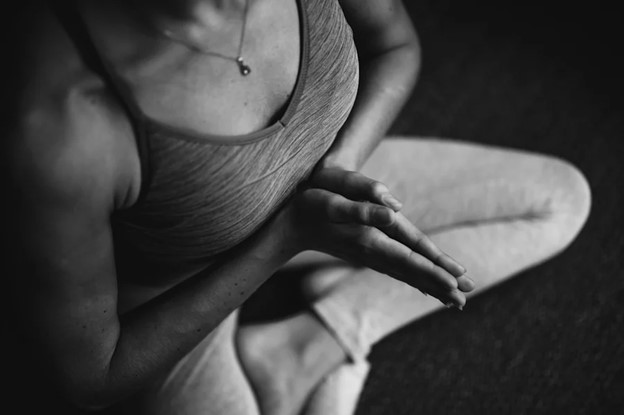
Precautions to take while doing Hip opening Yoga
1. Warm-Up Adequately:
Begin your practice with a thorough warm-up to prepare the muscles and joints for hip-opening poses. Gentle stretches and movements help increase blood flow and reduce the risk of injury.
2. Listen to Your Body:
Pay attention to your body’s signals. If you experience sharp pain or discomfort, ease out of the pose. Avoid pushing yourself too far, especially if you are new to hip-opening Yoga.
3. Consult with a Professional:
If you have existing hip or left knee (16.08) injuries, consult a healthcare professional or a qualified yoga instructor before attempting hip-opening poses. They can guide modifications or alternative poses to avoid exacerbating any pre-existing conditions.

4. Modify as Needed:
Modify poses based on your flexibility and comfort level. Use props like blocks, blankets, or cushions to support your body and prevent straining the muscles or joints.
5. Gradual Progression:
Progress gradually into deeper hip opening poses. Rushing into advanced poses without proper preparation may lead to injury. Respect your body’s limitations and progress at a pace that feels comfortable for you.
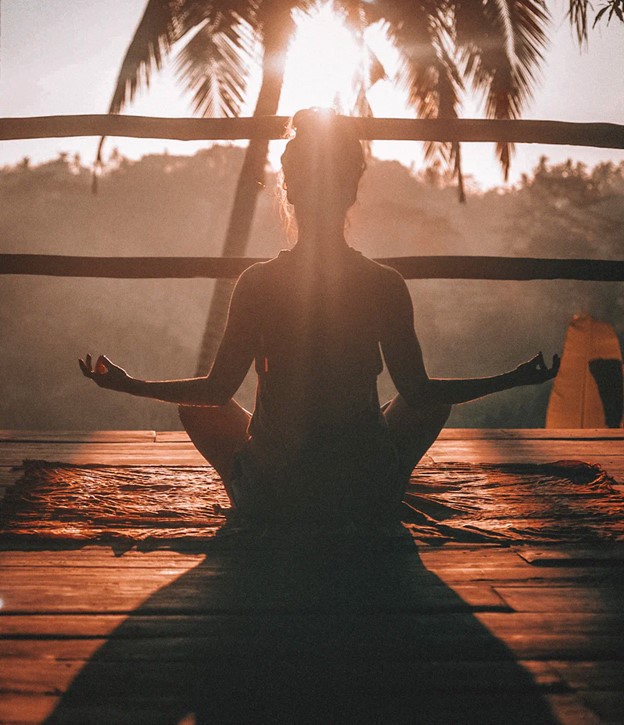
6. Avoid Overarching the Lower Back:
In poses like Pigeon Pose, avoid not overarching the lower back. Keep the spine neutral to prevent strain on the lumbar region. Use props or adjust the pose to maintain proper alignment.
7. Consider Knee Alignment:
Protect the knees by aligning them with the ankles in poses like Butterfly or Garland Pose. Avoid forcing the knees down if it causes discomfort, and use support under the knees if needed.
8. Engage Core Muscles:
Engage the core muscles to stabilize the pelvis. This helps distribute the stretch evenly across the hips and prevents excessive strain on the lower back.
9. Breathe Mindfully:
Focus on deep and mindful breathing during hip-opening poses. The breath can aid in releasing tension and promoting relaxation. Avoid holding your breath, which can increase muscle tension.
10. Be Mindful of Hip Sensitivity:
If you have sensitivity or pain in the hips, approach hip opening poses cautiously. Consider working with a yoga instructor who can provide personalized guidance and adjustments.
11. Use Support in Seated Poses:
Use props to support the knees and hips in seated poses like Fire Log Pose or Lotus Pose, especially if you experience discomfort. This helps maintain proper alignment and reduces strain on the joints.
12. Exit Poses Carefully:
When exiting hip opening poses, do so gradually and with awareness. Sudden movements may strain the muscles. Take your time transitioning out of each pose.

13. Hydrate Well:
Adequate hydration is crucial for joint health. Ensure you are well-hydrated before and after your practice to support the flexibility of muscles and joints.
14. Avoid Overexertion:
While challenging yourself is beneficial, avoid Overexertion. Pushing the body beyond its limits may lead to injury. Respect your current level of flexibility and gradually work towards improvement.
15. Regular Check-Ins:
Regularly reassess your alignment and form in hip-opening poses. As your flexibility improves, you may need to adjust to maintain proper alignment and prevent overstretching.

Which muscles to work on if you want to have a better hips flexibility ?
To open your hips and improve hip mobility, working on the following muscles and areas can be beneficial:
1. Gluteal muscles: Engaging and strengthening your glutes can help support hip mobility and stability.
2. External rotators: Strengthening these muscles can help improve hip mobility and prevent hip pain.
3. Hip complex: The muscles surrounding the hip joint can be targeted for improved flexibility and mobility.
4. Connective tissue: Stretching and working on the connective tissue around the hips can help increase flexibility.
5. Gluteus maximus: This large muscle in the buttocks can be targeted to support hip movement.
6. Front of your hips: Stretching and strengthening the muscles in the front of your hips can help open up the hip area.
7. Sides of the hips: Working on the muscles on the sides of the hips can contribute to improved hip mobility.
8. Sit bones: Strengthening the muscles around the sit bones can support hip stability and mobility.
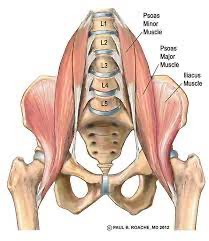
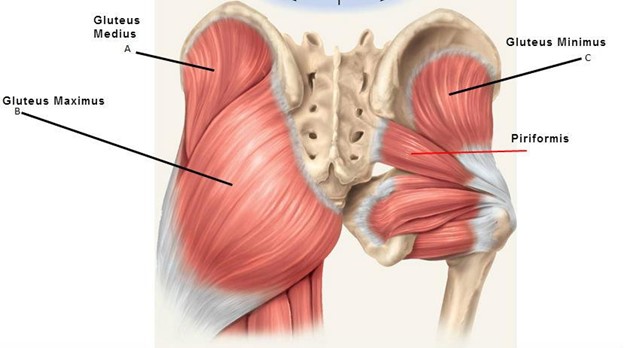

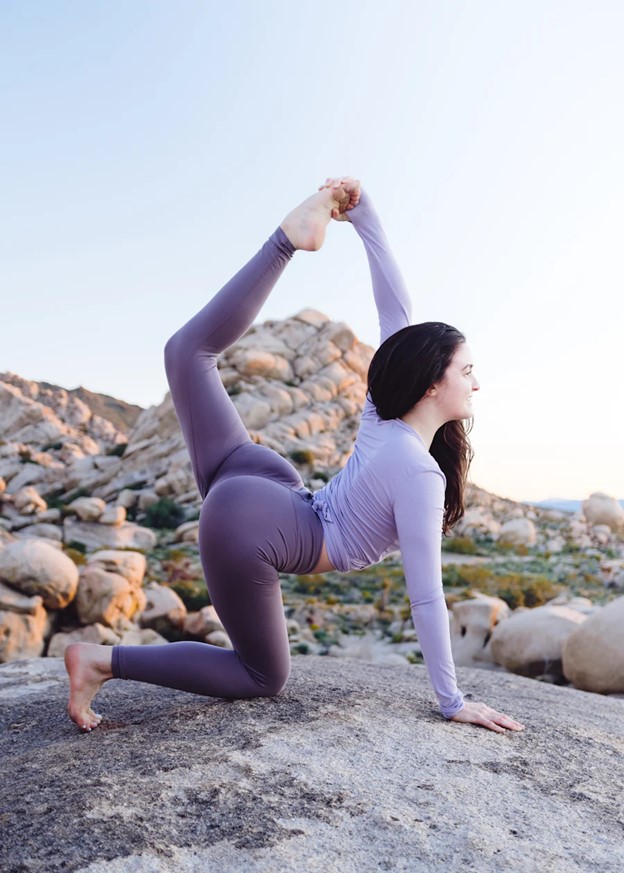
Incorporating hip opening exercises, hip opener poses like low lunge, crescent lunge, and bridge pose, as well as yoga postures that target the hips such as downward facing dog and child’s pose can also be a great way to open your hips and improve flexibility.
Additionally, using yoga props like a yoga block or yoga mat can aid in achieving a deeper stretch and promoting healthy hips. It’s also a good idea to consult with a yoga therapist or yoga teachers for guidance on specific exercises and poses tailored to your needs and abilities. Remember to listen to your body, avoid overstretching, and work gradually towards improving hip mobility for overall hip health.

➡️ I am a Yoga teacher, meditator and wellness professional . I wrote many articles about well being, retreats, Yoga and spirituality :
– How to practice transcendental meditation
And way more ! Check it out on our website . Just type search bar 🔍 with the topic you want to explore
Conclusion
Hip-opening yoga poses brings many benefits for both body and mind. These poses help alleviate tension, improve flexibility, and foster emotional well-being when practiced mindfully and with proper precautions. The journey of unlocking the hips is a physical practice, a pathway to balance strength and a deeper connection with oneself. Remember to listen to your body, progress gradually, and seek guidance when needed. Incorporating hip-opening Yoga into your routine allows you to embark on a transformative voyage toward greater physical comfort, emotional release, and overall holistic well-being.
WHO AM I ?
Hello !
I am Eric, a French Australian citizen based between Australia, Asia and Bali and I love to travel and experience the world. I generally like outdoor activities, wellness, great food and venues , party and real local adventures ! I am a Yoga practitioner and fitness lover
I created this blog because I love to travel and I want to share my experiences with others. I’ve been traveling since I was a child, and I’ve been to over 50 countries. I’ve seen some amazing things and met some amazing people, and I want to help others experience the same things.
I believe that travel is one of the best ways to learn about the world and about yourself. When you travel, you’re forced to step outside of your comfort zone and experience new things. You learn about different cultures, different religions, and different ways of life. You also learn about yourself, your strengths, and your weaknesses.
Travel can also be a great way to make new friends. When you’re traveling, you’re surrounded by people from all over the world, and you’re all in the same boat. You’re all there to explore and experience new things, and that can create a bond between people.
Let’s connect together !
I hope that my travel blog will inspire others to travel and to see the world. I also hope that it will help people to learn about different cultures and to become more open-minded.


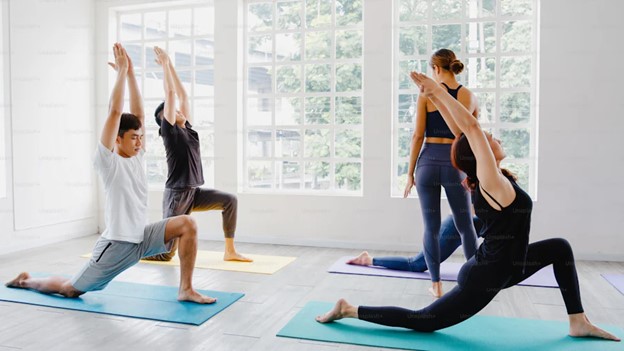
![Mantras for Burning Sage: Prayers and Full Process [2025]](https://funkyfreshtravels.com/wp-content/uploads/2024/05/Picture23-14.jpg)
![Best Hiking Stretches [Yoga Teacher Tips]](https://funkyfreshtravels.com/wp-content/uploads/2024/05/Picture1-34.jpg)
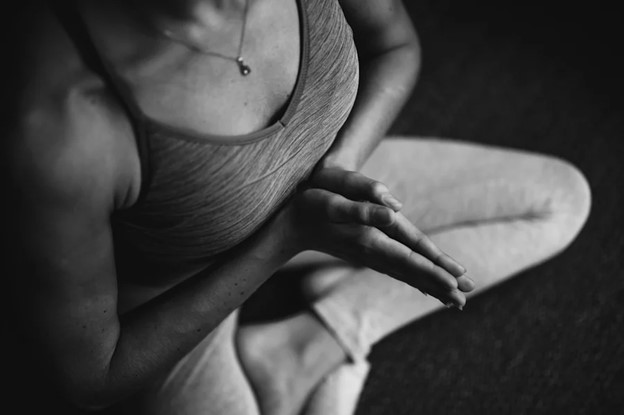
![70 Daily Best Positive Affirmations for Men [2025]](https://funkyfreshtravels.com/wp-content/uploads/2024/05/Picture1-31.jpg)
